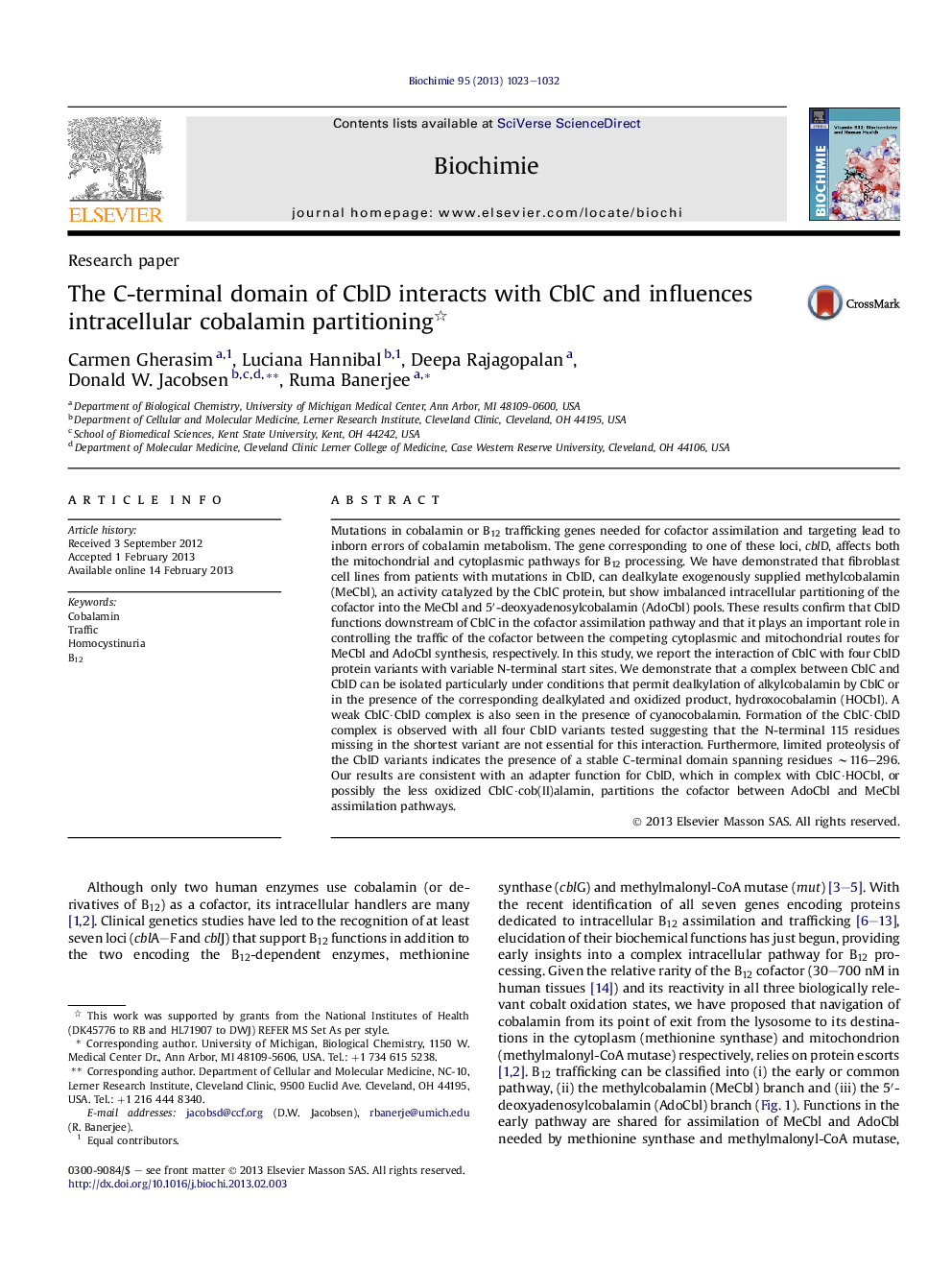| کد مقاله | کد نشریه | سال انتشار | مقاله انگلیسی | نسخه تمام متن |
|---|---|---|---|---|
| 1952186 | 1057190 | 2013 | 10 صفحه PDF | دانلود رایگان |

Mutations in cobalamin or B12 trafficking genes needed for cofactor assimilation and targeting lead to inborn errors of cobalamin metabolism. The gene corresponding to one of these loci, cblD, affects both the mitochondrial and cytoplasmic pathways for B12 processing. We have demonstrated that fibroblast cell lines from patients with mutations in CblD, can dealkylate exogenously supplied methylcobalamin (MeCbl), an activity catalyzed by the CblC protein, but show imbalanced intracellular partitioning of the cofactor into the MeCbl and 5′-deoxyadenosylcobalamin (AdoCbl) pools. These results confirm that CblD functions downstream of CblC in the cofactor assimilation pathway and that it plays an important role in controlling the traffic of the cofactor between the competing cytoplasmic and mitochondrial routes for MeCbl and AdoCbl synthesis, respectively. In this study, we report the interaction of CblC with four CblD protein variants with variable N-terminal start sites. We demonstrate that a complex between CblC and CblD can be isolated particularly under conditions that permit dealkylation of alkylcobalamin by CblC or in the presence of the corresponding dealkylated and oxidized product, hydroxocobalamin (HOCbl). A weak CblC·CblD complex is also seen in the presence of cyanocobalamin. Formation of the CblC·CblD complex is observed with all four CblD variants tested suggesting that the N-terminal 115 residues missing in the shortest variant are not essential for this interaction. Furthermore, limited proteolysis of the CblD variants indicates the presence of a stable C-terminal domain spanning residues ∼116–296. Our results are consistent with an adapter function for CblD, which in complex with CblC·HOCbl, or possibly the less oxidized CblC·cob(II)alamin, partitions the cofactor between AdoCbl and MeCbl assimilation pathways.
► CblD is involved in the B12 processing pathway downstream of CblC.
► CblD preferentially interacts with the product complex of CblC and cobalamin.
► N-terminal deletion of 115 amino acids does not impair CblD:CblC complex formation.
► The N terminal 40 percent of CblD is dispensable for interaction with CblC.
Journal: Biochimie - Volume 95, Issue 5, May 2013, Pages 1023–1032